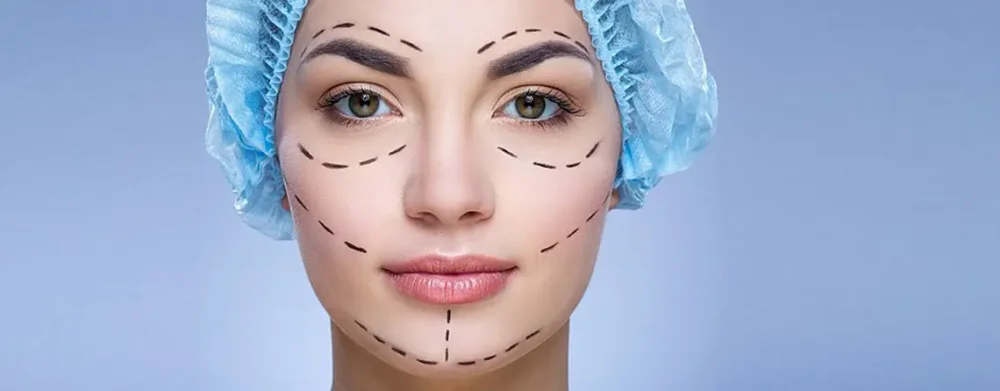Contents
- Michael Jackson Skin Color: The Truth Behind His Transformation
- Bella Hadid Before and After: What Cosmetic Procedures Has She Had?
- Scars After a Deep Plane Facelift
- Non-Surgical Facelift with Morpheus8: Advanced Skin Tightening
- Kesselring’s Lip Surgery ( Direct lip Lift)
- “Preservation Deep Plane Facelift™ by Dr. Mubariz” Natural, long-lasting rejuvenation using the most advanced anatomical techniques.
- From Hidden to Honored: A Neckline That Reflects Your True Self
- Azerbaijani Aesthetic Surgery on the Global Stage-Dr.Mubariz Mammadli
- Neck Lift Surgery cost, before and after, scars & more

Plastic surgery techniques encompass a wide range of procedures designed to improve, reconstruct, or alter the appearance or function of various parts of the body. These techniques can be classified into aesthetic (cosmetic) procedures and reconstructive procedures, with each having its own set of specialized techniques. Below are some key plastic surgery techniques:
1. Facial Rejuvenation
- Facelift (Rhytidectomy): This procedure tightens the skin of the face and neck to reduce sagging and wrinkles. The surgeon removes excess skin and redistributes tissue for a more youthful appearance.
- Blepharoplasty: This eyelid surgery corrects drooping eyelids and under-eye bags by removing excess fat and skin, improving vision and appearance.
- Rhinoplasty: Commonly referred to as a "nose job," this surgery reshapes the nose for cosmetic purposes or to improve breathing.
- Brow Lift: This technique raises the brow to correct sagging and forehead wrinkles, rejuvenating the eye area.
2. Breast Surgery
- Breast Augmentation: Involves the use of implants or fat transfer to enlarge or reshape the breasts.
- Breast Reduction: This surgery removes excess breast tissue to reduce the size of large, heavy breasts, alleviating physical discomfort and improving body proportions.
- Breast Lift (Mastopexy): Tightens and lifts sagging breasts, often after pregnancy or weight loss.
- Breast Reconstruction: After mastectomy, breast reconstruction recreates a natural-looking breast using implants or the patient’s own tissue.
3. Body Contouring
- Liposuction: A procedure that removes excess fat from areas like the abdomen, thighs, and flanks, reshaping the body’s contours. Variations include tumescent liposuction, ultrasound-assisted liposuction (UAL), and laser-assisted liposuction.
- Tummy Tuck (Abdominoplasty): This surgery removes excess skin and fat from the abdomen, often after weight loss or pregnancy, and tightens the abdominal muscles.
- Arm Lift (Brachioplasty): Targets excess skin and fat in the upper arms, improving contours and eliminating "bat wings."
4. Reconstructive Surgery
- Burn Reconstruction: This includes techniques to repair burn damage, such as skin grafts, tissue expansion, and flap surgery.
- Cleft Lip and Palate Repair: Surgical correction of congenital deformities of the lip and palate, restoring functionality and aesthetics.
- Microvascular Surgery: This involves the transfer of tissue from one part of the body to another, using blood vessels and nerves. It's commonly used in facial reconstruction or after trauma or cancer.
- Scar Revision: This procedure improves the appearance of scars from injury, surgery, or acne, reducing visibility and improving the texture.
5. Non-Surgical Aesthetic Procedures
- Botox Injections: A popular treatment for reducing wrinkles and fine lines by temporarily paralyzing the underlying muscles.
- Dermal Fillers: Injectable substances (like hyaluronic acid) are used to fill wrinkles, restore volume, and enhance facial features (e.g., cheeks, lips).
- Chemical Peels: A chemical solution is applied to remove damaged skin layers, improving texture, tone, and appearance.
- Laser Resurfacing: A laser is used to treat skin imperfections such as wrinkles, acne scars, and pigmentation by stimulating collagen production and removing damaged skin layers.
6. Fat Grafting
- Fat Transfer (Autologous Fat Grafting): This technique involves harvesting fat from one area of the body (like the abdomen or thighs) and injecting it into areas that need volume, such as the face, breasts, or buttocks. It’s a natural alternative to implants.
7. Hair Restoration Surgery
- Follicular Unit Transplantation (FUT): In this procedure, a strip of scalp is removed, and hair follicles are transplanted to areas of thinning or balding.
- Follicular Unit Extraction (FUE): Individual hair follicles are harvested and transplanted to areas with hair loss.
8. Hand Surgery
- Carpal Tunnel Release: A procedure to relieve pressure on the median nerve in the wrist, improving hand function.
- Tendon Repair: Restoring function after tendon injuries, such as in the fingers or hands, can require delicate microsurgical techniques.
- Replantation: Reattaching severed fingers, hands, or limbs using microsurgical techniques to reconnect nerves, blood vessels, and tendons.
9. Nerve Repair Surgery
- Peripheral Nerve Repair: Techniques used to repair damaged nerves, often after trauma, to restore function or sensation to affected body parts.
- Facial Nerve Reconstruction: After injury, surgery can restore facial nerve function to improve facial expression.
10. Genital Reconstruction
- Gender Confirmation Surgery: Includes both male-to-female and female-to-male surgeries for those transitioning, involving the creation of new genital structures.
- Vaginoplasty and Phalloplasty: Involves the construction or reconstruction of genital structures for patients undergoing gender-affirming surgery.
11. Skin Grafting and Flap Surgery
- Split-Thickness Skin Grafts: Thin layers of skin are removed from one part of the body and applied to another area to cover burns or wounds.
- Flap Surgery: A section of skin, fat, muscle, or bone is moved from one part of the body to another, keeping its original blood supply, for more complex reconstructions (e.g., breast, facial, or limb reconstruction).
12. Cosmetic Gynecology
- Labiaplasty: A procedure to reduce or reshape the labia for aesthetic or functional reasons.
- Vaginoplasty: Tightening the vaginal muscles, often done for women after childbirth.